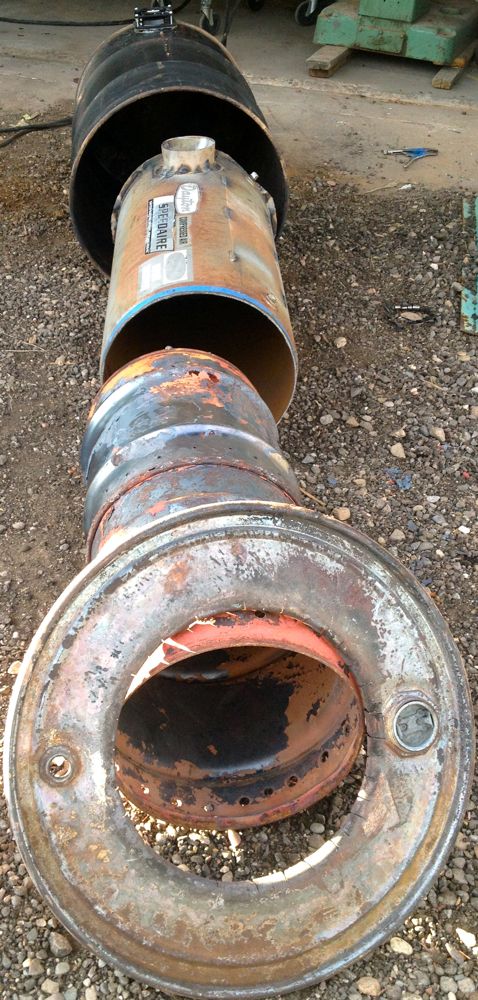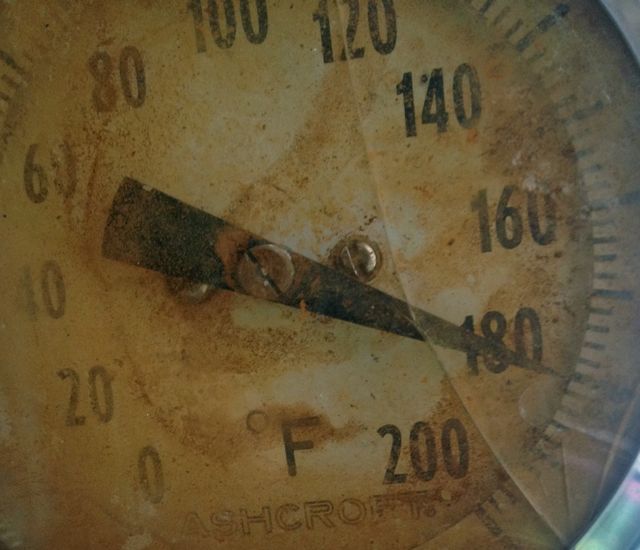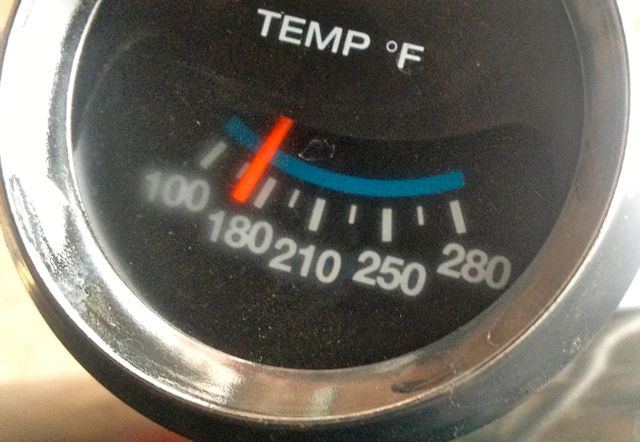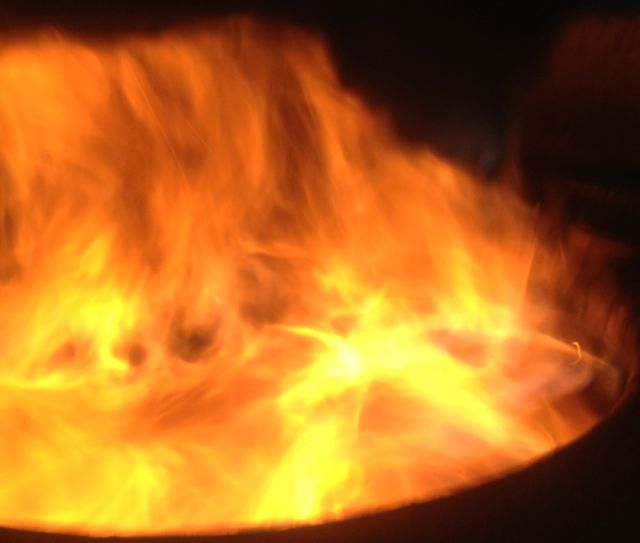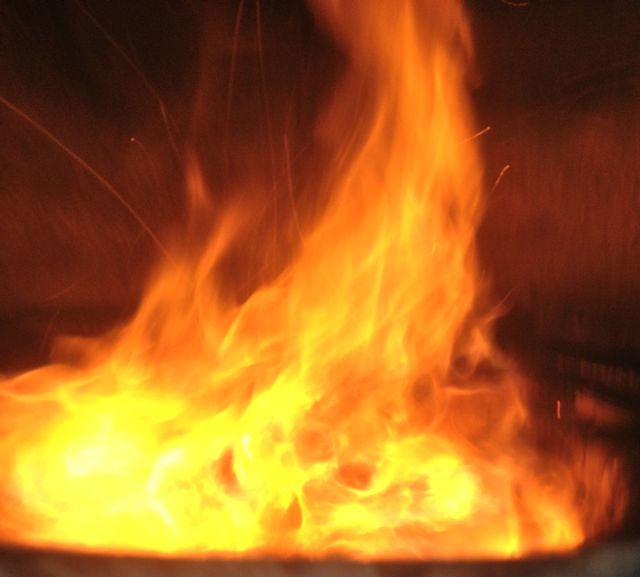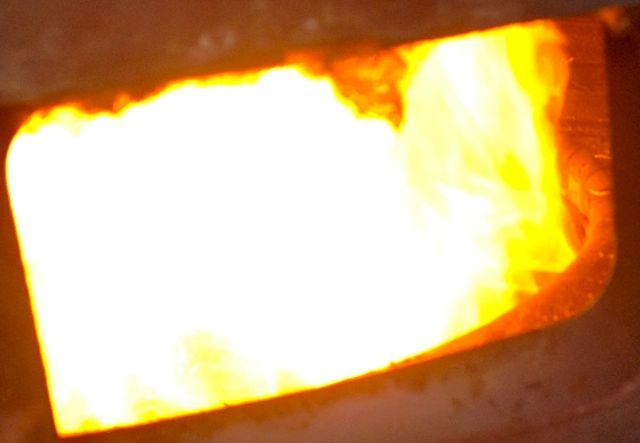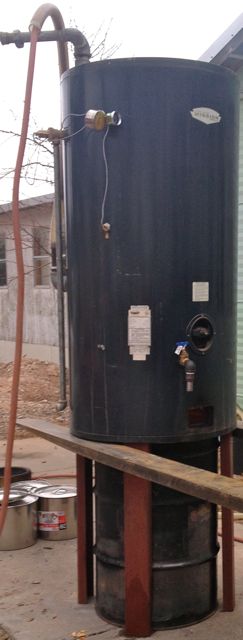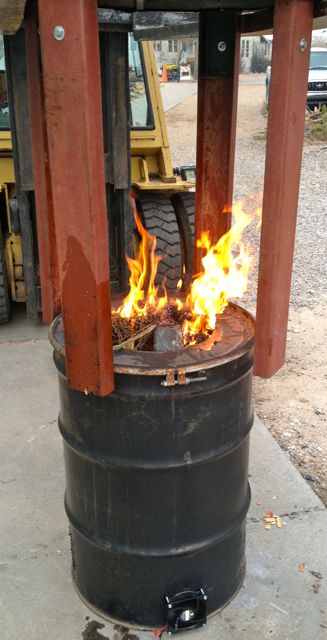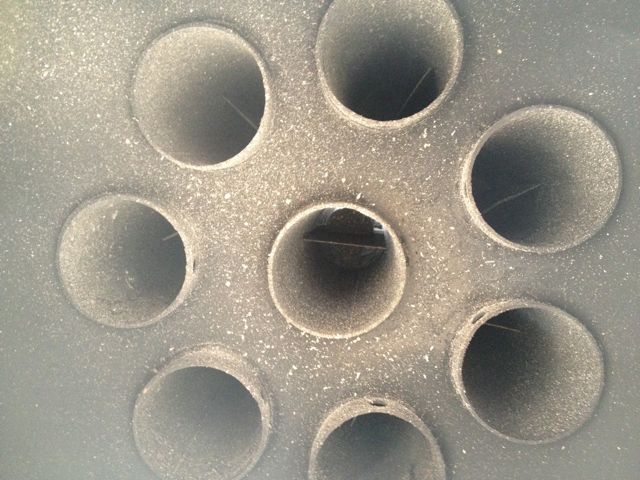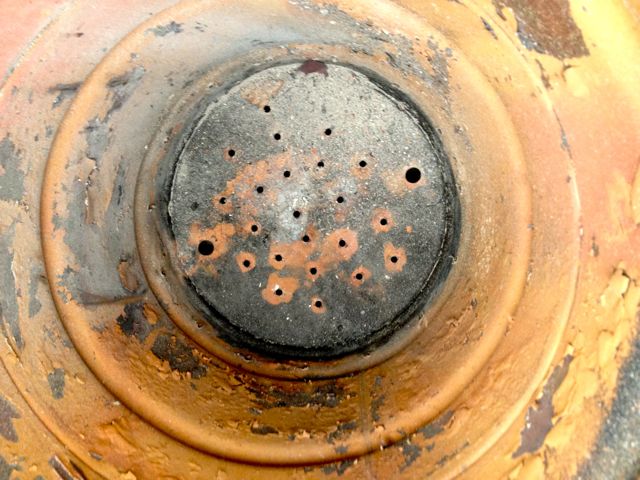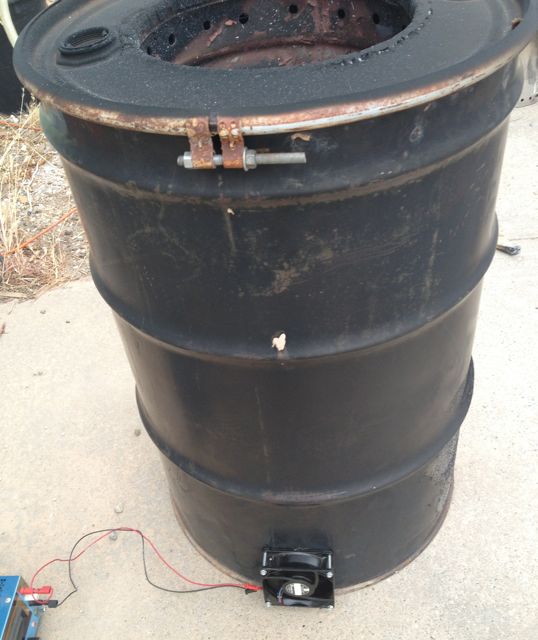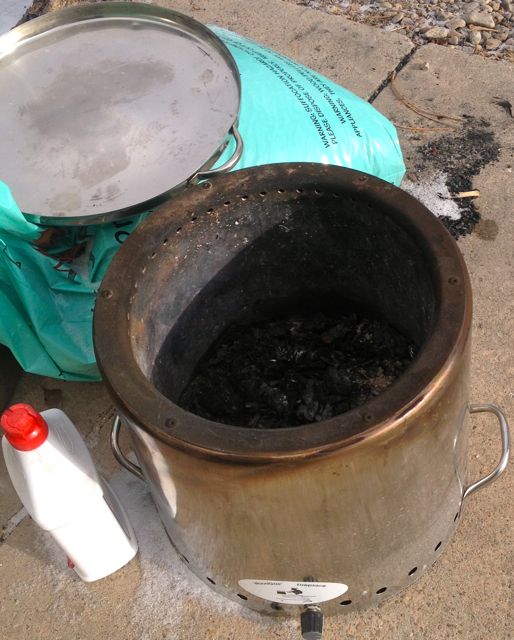I finally got my self a nice soaking tub. 150 gallon polymer cattle water unit. just about the right length for sitting in and the water comes up near the neck when full.
I put it in the shower where I could simply fill it from a shower head. Problem being the standard 30 gallon 35 kBTU propane water heater did not have enough energy in it to heat anywhere near a good hot soak. On top of that, propane is expensive and has to be hauled in by 100 pound bottle from 80 miles away. Natural gas is not an option at this location either. I much prefer using sustainable, renewable energy.
So I took one of the old commercial NG water heaters from the place here at MTA and removed the natural gas burner related stuff and cut the bottom out so I could put a fire under it. Turns out it is about a 75 gallon unit in a high recovery rate design. About 360 KBtu gas input and 300 gallons per hour rating at an assumed temperature rise of 70 degrees F. It had been used for laundry room hot water and showers in a basket ball gymnasium back when NG was almost free.
I have had a wood gasification "fireplace" for some time. It is about 5 gallon container size based on exterior dimensions but the actual fire chamber is smaller It is rated at 50 Kbtu per hour. it holds about 14 pounds of wood pellets which is about 100 KBtu and it takes about 2 hours to burn that load. There is a 12 volt fan that uses a wall wart to push air through the thing. The fan has a variable speed knob. It is mostly all Stainless Steel so looks and feels pretty good. Its made in India. (See image under the title
Using the forklift, I set the water heater over this commercial wood gasification fireplace (WGF) once it was running. It fit very easily in the hole I had cut in the bottom of the water heater outer shell and I got virtually no flue gas back wash. This particular water heater has 8 sub flues that the initial fire gas goes up to heat the water and comes out the top via a single flue. (see image under the title
Water heater flues)
The first test run with the commercial woodgas fireplace burned about 28 pounds of pellets over a 6 hour period (2 fillings of pellets) and got the water to about 150 degrees. The first filling got the water from about 48 degrees to 98 degrees and the second to 150 degrees. This all worked out to about 48% efficiency (fuel energy to stored water energy) which is exactly what the rated Natural Gas efficiency calculates to (360 Kbtu per hour for 300 gallons per hour for a 70 degree temperature rise).
The second test was not as clean. I started out trying to use small freshly split 8 inch long by less than 1 by 1 " sticks of wood from firewood collected last spring? It did not seem to have dried out very well and was hard to get to burn well. I actually got wet creosote dripping from the underside of the water heater early on. Over a 9 or so hour period, I added small quantities (2 to 9# at a time) of dry bits of wood. The temperature went from 50 to 164 over that period of time. From 1:30 AM to 11.40 AM the water temperature dropped to 116 degrees. This means the setup looses about 7 KBtu per hour.
My plan for use beyond heating a soaking tub is to run an efficient wood fire to heat fluid to be used for space heating by pumping it through a liquid to air heat exchanger in the space to be heated. The first target would be B&L's trailer to replace electric and propane heating. Something more than 50KBTU per hour and 2 hour fuel supply is desired. I have taken a stab at making a scaled up version of the woodgas fireplace. (not really to scale but bigger using materials relatively easily at hand and cheap) It is roughly 5 times bigger. The firebox is a pair of 9 gallon drums welded end to end inside a 55 gallon drum with a 12 volt fan mounted to the outside bottom of the big drum and appropriate holes drilled in the inner drum. (avoid getting burned by the outer drum wall. (see the image under the title
The initial test fire indicated good burn and gasification happening with air coming from the upper holes. I did see some reburn happening at the crack where the two drums came together so I later drilled some more holes in the burn chamber below weld level. One interesting incident was that the original material left coating the inside of the 55 gallon drum heated up and gassified, resulting in a small explosion that apparently sent out a flame front I did not see, but that singed the lower part of my beard and eyebrows. This blew out the fire in the burn chamber and left fire burning in the area between the outer drum wall and he outer burn chamber wall. This burned the paint off the outside of the 55 gallon drum about 2/3 of the way around, but not on the upwind side of the drum. Note for next mod--put in another container so vermiculite insulation can be added to the the space between this and the outer drum to improve efficiency (keep the heat in) and safety (outside drum wall not crazy hot). ALSO, NEXT TIME I DO ONE OF THESE, BURN OUT THE BARREL FIRST.
The success of the initial test firing was good enough to try heating some water. I added a set of legs (see the image under the title
New legs on the water heater) to the water heater such that it would come down over the up-sized burner with the top of the burner just touching the bottom of the water heater outer shell (the whole I cut in the bottom of the water heater outer shell was not very precise so there are places where the heating chamber under the actual water tank is open to the air--as well as the side window where you used to light the pilot light is open to the flame above the heating unit.) These items need to be improved, as well as adding high temperature insulation to the water tank heater walls in the lower part of its enclosure. This should measurably improve efficiency. (see the image under the title water heater in place over the 55 gallon burn chamber)
I have made one test run with this configuration. In the process, I heated about 150 gallons of water. From cold start, it took 30 minutes to get from 50 to 135 degrees. I calculated that this translates to about 250K Btu per hour fuel input. I pulled some of the hot water (75 gallons?) and refilled. The temperature reached about 200 degrees which is right at boiling point for 6500 foot elevation--yes, it looked like steam wafting out the upper tank outlet. And some of the water was at this temperature after pumping it through about 100 feet of garden hose to the tub. (see the images under the title
Temperature readings)
The fire was pretty ferocious. (see images under the title
Fire going good) I ended up turning the fan down to 9 volts (from 14) for much of this burn. One observation was that, when it was really going good, I was getting black smoke out he top like a diesel engine under load. I believe this is due to excess initial burn air versus re-burn air. Some of the big holes in the bottom will be plugged for the next run. Otherwise, the re-burn action was great and there was no visible smoke. (see the images under the title
reburn hot fresh oxygen rim outlet jets at lower flame) I did not weigh the fuel I put in for this initial run. I would guess it was equal to less than 2/3 full of pellets or less. So an estimated 150 gallons of hot water from one partial load of fuel in about 90 minutes. Running at a steady rate, this unit is supposed to heat 300 gallons per hour by 70 degrees. More experiments with known amounts of fuel need to be done once efficiency improvements are made. One of my ongoing concerns is burning out the burn chamber which is relatively light gauge steel rather than thicker stainless steel--but it is really cheap for experimental purposes.
Look for a second run update once I have made the efficiency improvements noted.
